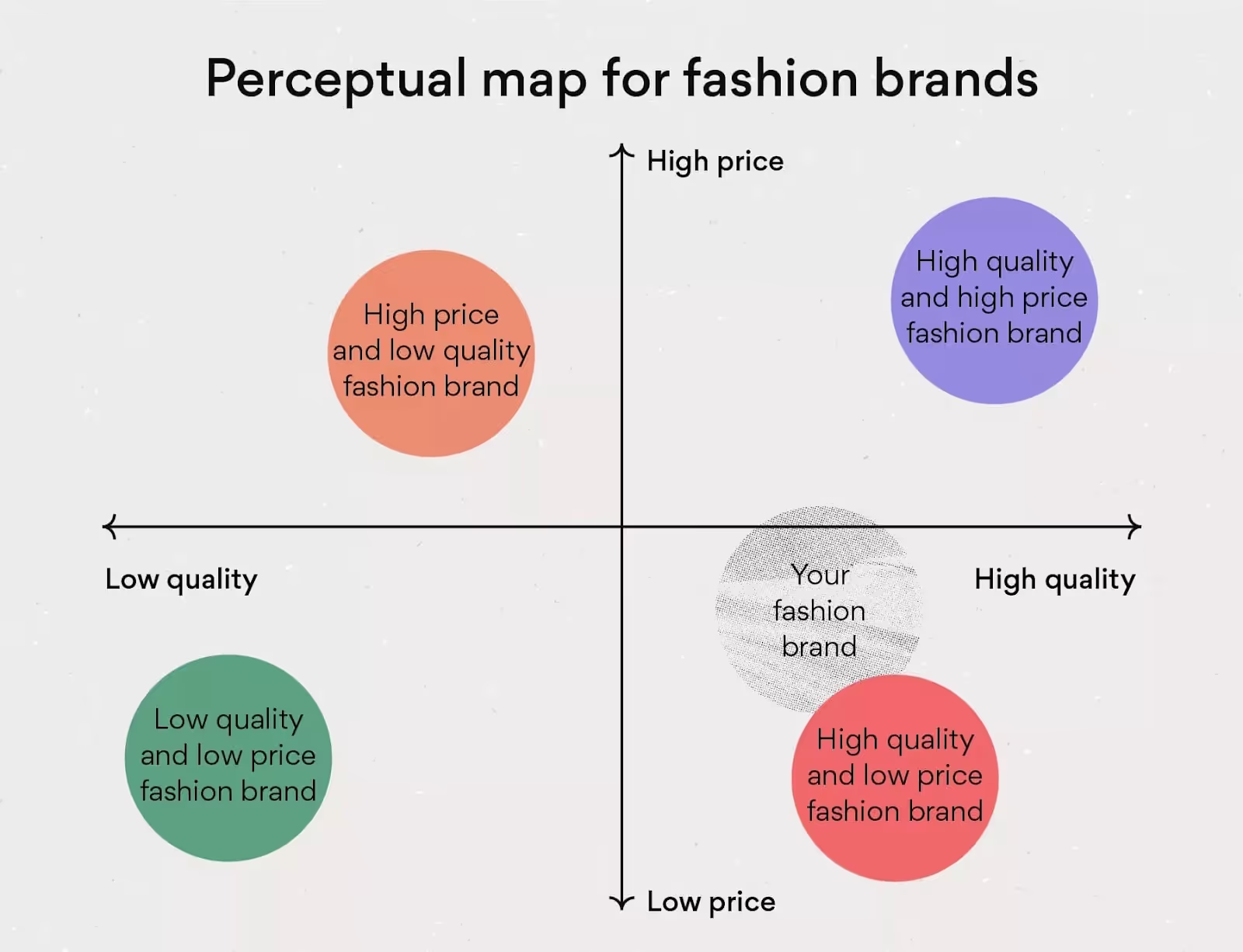Ultimate Guide to a Winning Marketplace Positioning

The marketplace model is booming—but for every success like Airbnb or Etsy, hundreds fail. A critical reason for this shortfall? A lack of clear marketplace positioning strategy.
Marketplace founders often focus on product features or initial traction but overlook how their platform is perceived relative to competitors. Positioning isn't just branding; it's your core strategy to own a distinct place in the minds of your users—buyers and sellers alike.
In this comprehensive guide, we’ll break down the core concepts, frameworks, and tactical moves to build a winning marketplace positioning. Whether you're building a horizontal platform or a highly specialized niche marketplace, mastering your positioning is non-negotiable.
What is Marketplace Positioning?
Marketplace positioning refers to the strategic process of defining how a marketplace should be perceived in the minds of its target customers, relative to competitors. As outlined in Kotler & Keller’s Marketing Management (15th ed.), positioning is “the act of designing a company’s offering and image to occupy a distinct place in the minds of the target market”.
Types of Marketplace Positioning
- Price-based Positioning – Competing as the low-cost leader (e.g., Temu).
- Quality-based Positioning – Premium, trusted service (e.g., 1stDibs).
- Category/Niche Positioning – Focused on a specific vertical (e.g., Reverb for musical instruments).
- Demographic-based Positioning – Serving a specific user segment (e.g., Kidizen for parents).
- UX-driven Positioning – Standing out with a frictionless or unique experience (e.g., Faire).
The Perceptual Map in Market Positioning
A perceptual map visually plots how customers perceive different marketplace brands. The axes often include dimensions like price vs. quality or mass appeal vs. niche focus. This tool helps identify white space opportunities where your marketplace can stand out.

How to Create an Effective Marketplace Positioning Strategy
Creating a standout marketplace positioning strategy means combining academic frameworks with real-world insights.
1. Define Your Target Users Deeply
Start with segmentation—go beyond age, income, or job title. Understand psychographics, transaction patterns, unmet needs, and emotional drivers.
Apply market segmentation theory from Kotler & Armstrong (Principles of Marketing) through the following steps:
- Segment your audience using both demographic (e.g., age, income, location) and psychographic data (e.g., behaviors, values, lifestyle).
- Create user personas that reflect real motivations and problems—this includes goals, pain points, preferred channels, and decision-making criteria.
- Tailor platform design to match each persona’s journey—from homepage layout and onboarding flow to notification tone and help centre support.
- Refine messaging and UX by aligning communication style, CTA phrasing, and navigation structure with the expectations and context of each persona.
- Prioritize features that solve the specific pain points identified in segmentation—this could mean building better search filters for prosumers or enabling concierge support for high-value vendors.
- Use personas to guide seller acquisition, ensuring the types of providers on your platform match the user types you're targeting.
A well-defined persona is not just a marketing tool—it’s the backbone of a relevant, resonant, and strategically positioned marketplace.
2. Analyze Competitors with Strategic Frameworks
- Carry out a SWOT analysis to determine your strengths, weaknesses, opportunities, and threats in the marketplace.
- Evaluate the following market pressure points using Porter's Five Forces:
· The threat from new market entrants
· Supplier bargaining power
· Buyer bargaining power
· Substitute product threat
· Industry rivalry - Create a competitor positioning map using perception mapping techniques. Competitors can be mapped using parameters like price competitiveness against UX depth. This can reveal white space opportunities. For example, a mid-competitor priced cluster may lie within the mid-price/mid-UX zone, while previously serving the high-UX, low-price quadrant is still un-catered to.
3. Identify Your Strategic Differentiators
Ask yourself: What do we do that no one else does?
- Craft a compelling value proposition that connects with both the emotional and rational drivers of your target users.
- Leverage Value Proposition Canvas to ensure your offering aligns with real user needs by:
- Identifying key customer jobs (what they are trying to achieve)
- Highlighting customer pains (what frustrates or blocks them)
- Mapping your platform's pain relievers and gain creators
- Differentiate through depth, not breadth by adopting a specialized marketplace strategy. This may include:
- Curated supply: Vet sellers to maintain consistent quality or niche focus
- Hyperlocal insights: Use geolocation or cultural relevance to serve regional users better
- Expert onboarding: Provide white-glove onboarding or tailored support for sellers and buyers
- Avoid the trap of scale-too-soon—a deep, value-aligned offering in a narrow market often outperforms a shallow, wide-reach approach during early phases.
A well-articulated value proposition becomes your strategic north star, guiding feature prioritization, marketing messaging, and long-term positioning.
4. Build a Strategic Marketplace Platform
- Align your UX/UI design with brand tone: Ensure visual aesthetics, navigation structure, micro-interactions, and responsiveness reflect your positioning—premium, community-driven, minimalist, etc.
- Architect your backend to support core positioning values, such as:
- Exclusivity: Advanced user access logic, invite-only mechanisms, or tiered seller models
- Speed: Efficient caching, auto-scaling infrastructure, and performance monitoring tools
- Flexibility: Modular architecture, custom plugin support, or API-first design
- Develop a content strategy that reinforces differentiation:
- Use editorial content, community-driven reviews, or onboarding tutorials to highlight your value
- Align SEO keywords and category structure with niche focus or core use cases
- Ensure all touchpoints—email flows, support copy, platform CTAs—are unified in message and tone
A truly strategic marketplace platform doesn't just serve as a technical foundation—it actively delivers and enhances the value your brand promises.
5. Test, Validate, and Iterate
Don’t guess—measure. Run A/B tests on landing pages, use heatmaps to assess friction points, and perform cohort analysis to compare behavior between positioned variants. Feedback loops from user testing and early adopters should feed directly into positioning refinement.
If you're using a marketplace builder like Sharetribe, choose configurations that hardwire your unique value. From search filters to messaging flows, every pixel and click should echo your positioning.
Journeyhorizon – Your Strategic Marketplace Positioning Partner
At Journeyhorizon, we specialize in helping startups and scale-ups navigate the complexities of building and growing a marketplace business. Whether you're launching a specialized B2B marketplace or repositioning an existing platform, we bring a full-stack strategy approach—product, positioning, and growth.
We don’t just offer development services. We provide:
- Strategic roadmap development
- Positioning workshops
- Branding aligned with platform strategy
- Competitive audits and UX alignment
Need to position your marketplace for breakout growth? Journeyhorizon is your unfair advantage.
Conclusion
Without a strong marketplace positioning, even the most well-funded platform risks fading into obscurity. Your positioning dictates your traction, retention, and brand equity. From understanding the academic principles to executing real-world strategy, your marketplace's success starts with defining where it stands—and why it matters.
Ready to define your edge? Start with strategy. Start with positioning.


